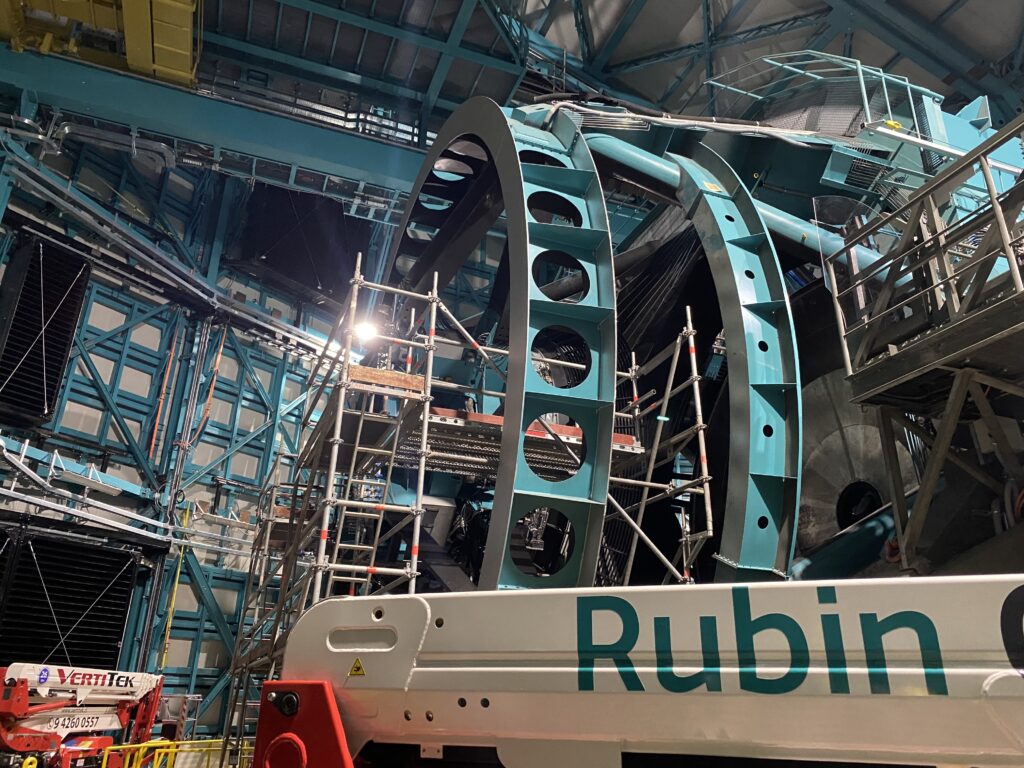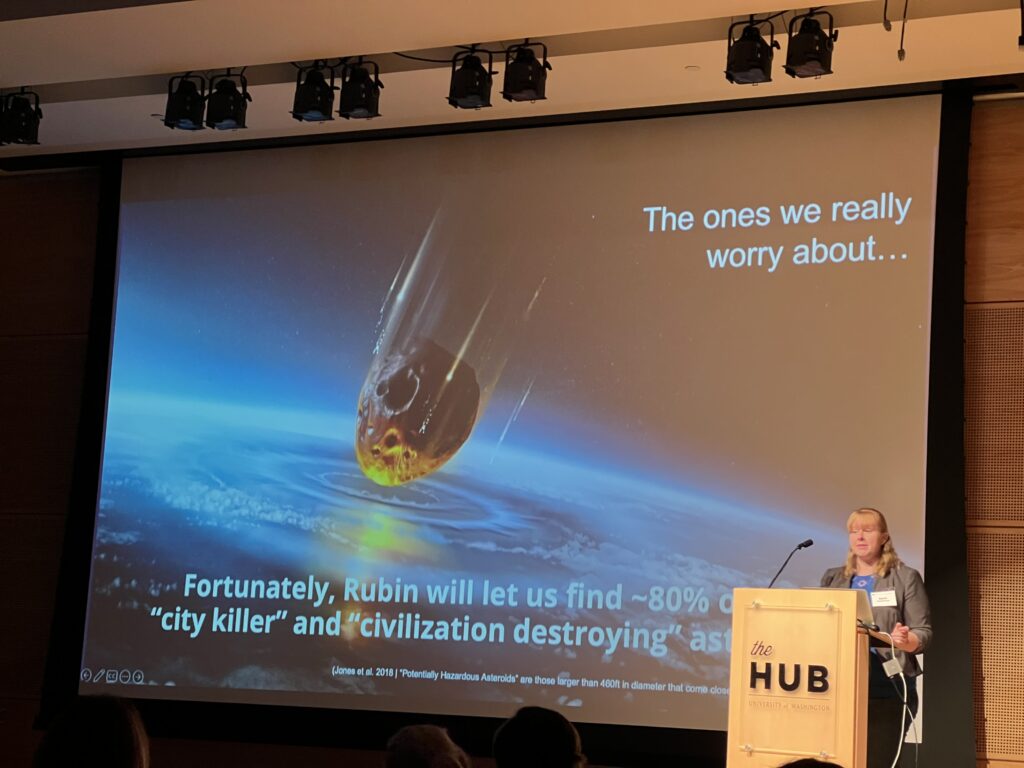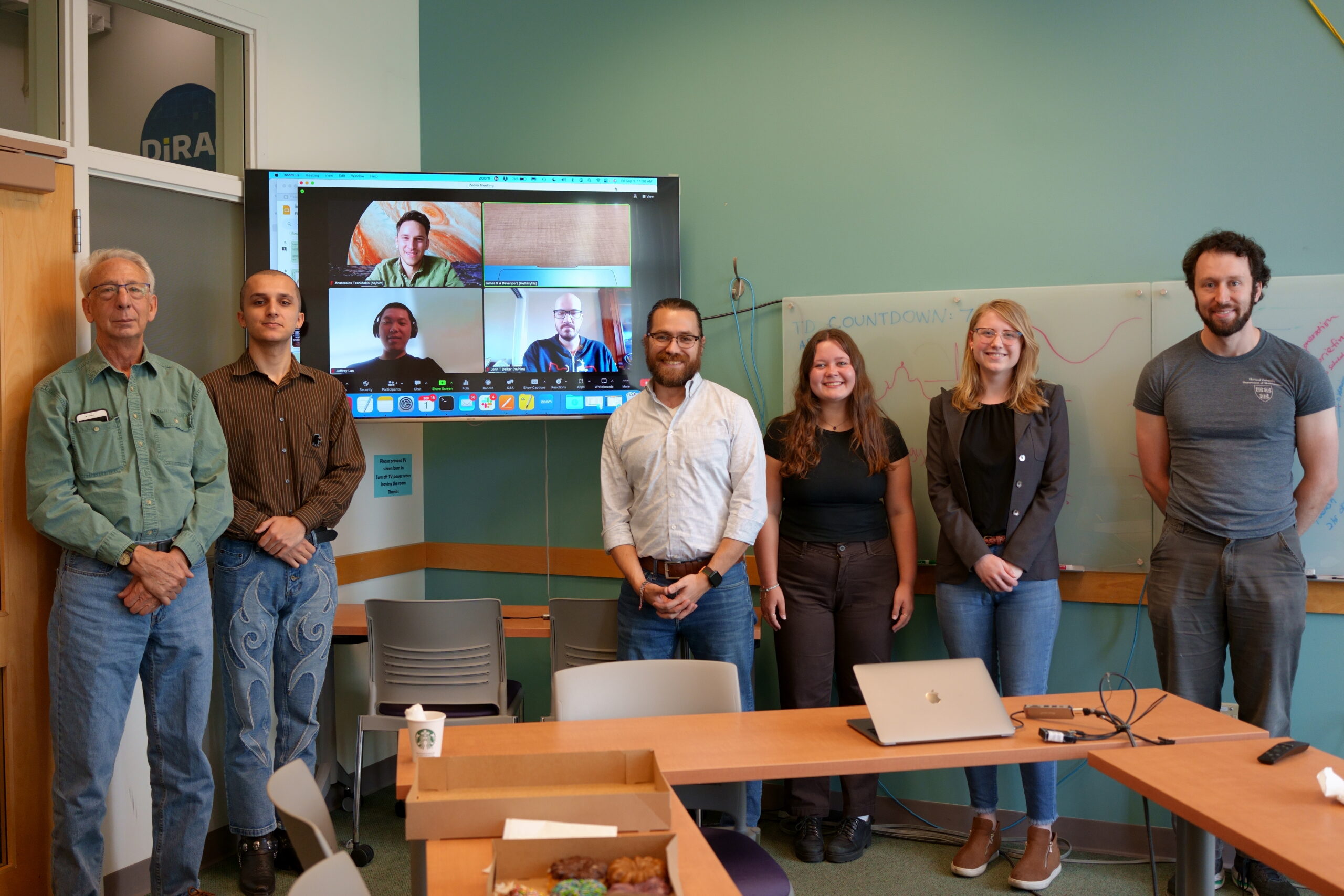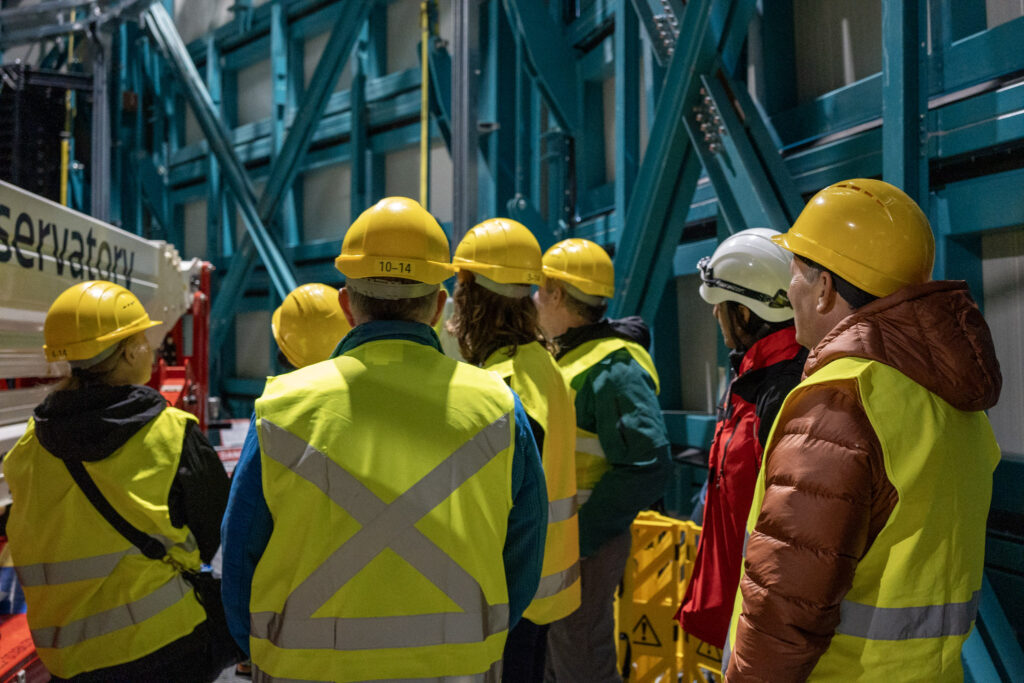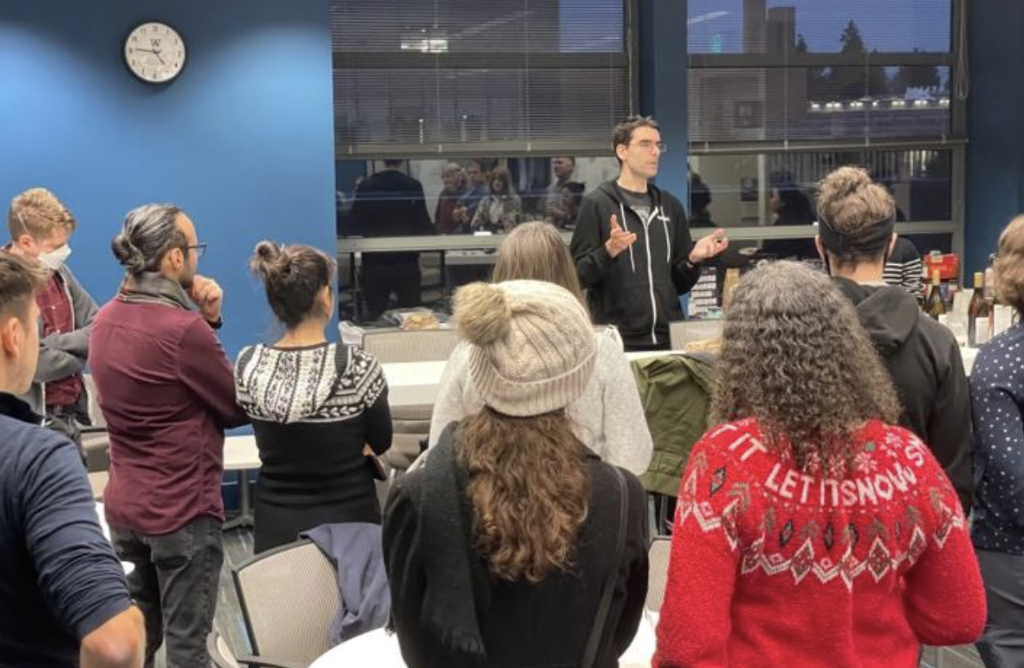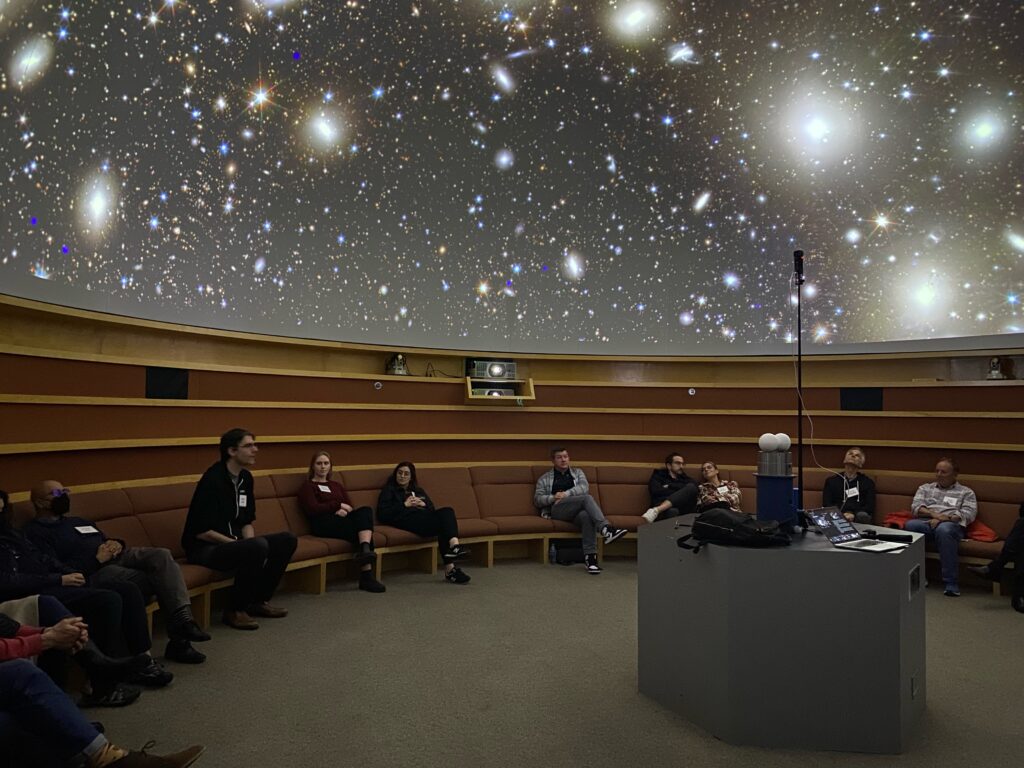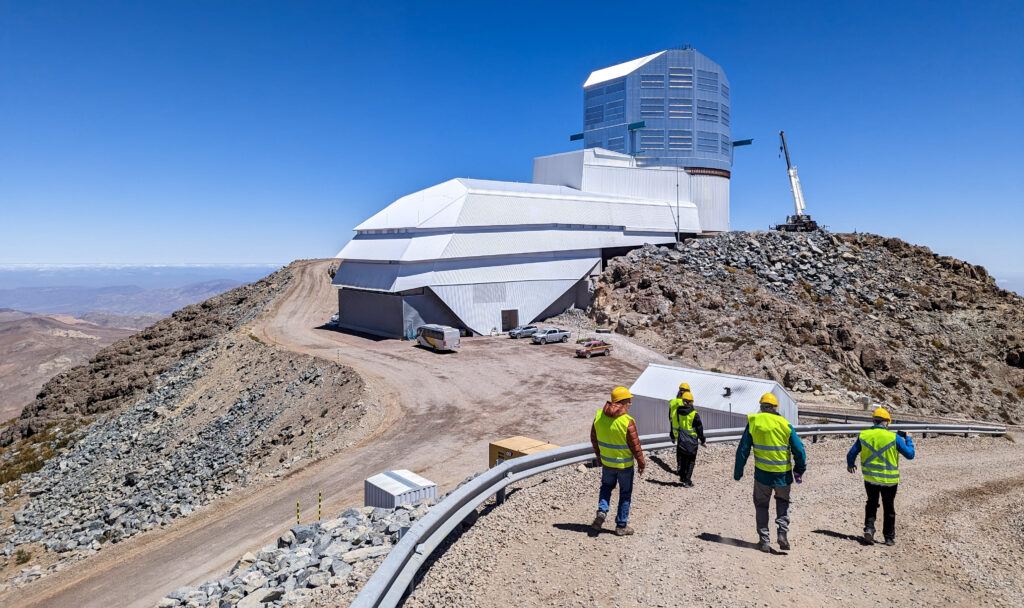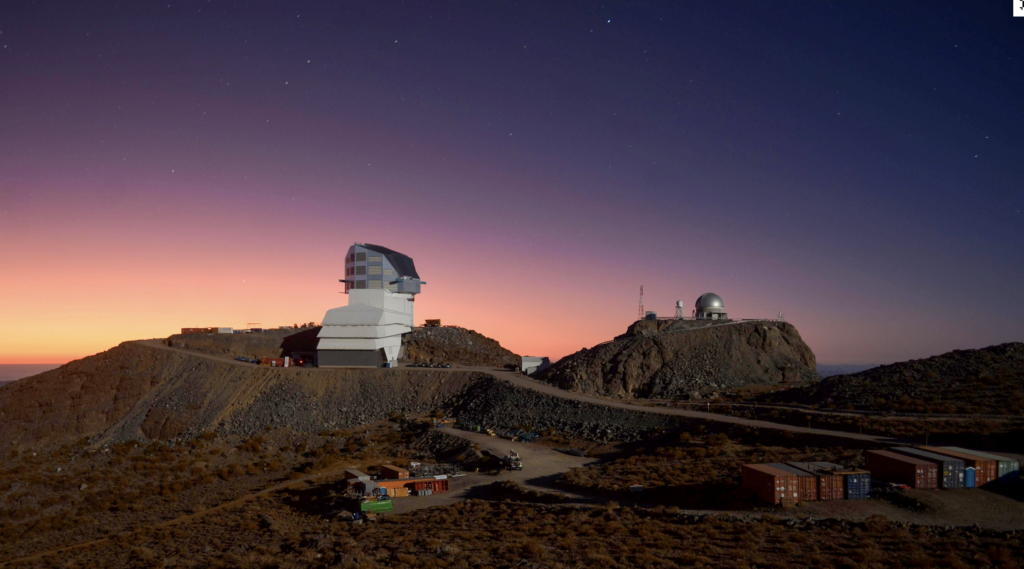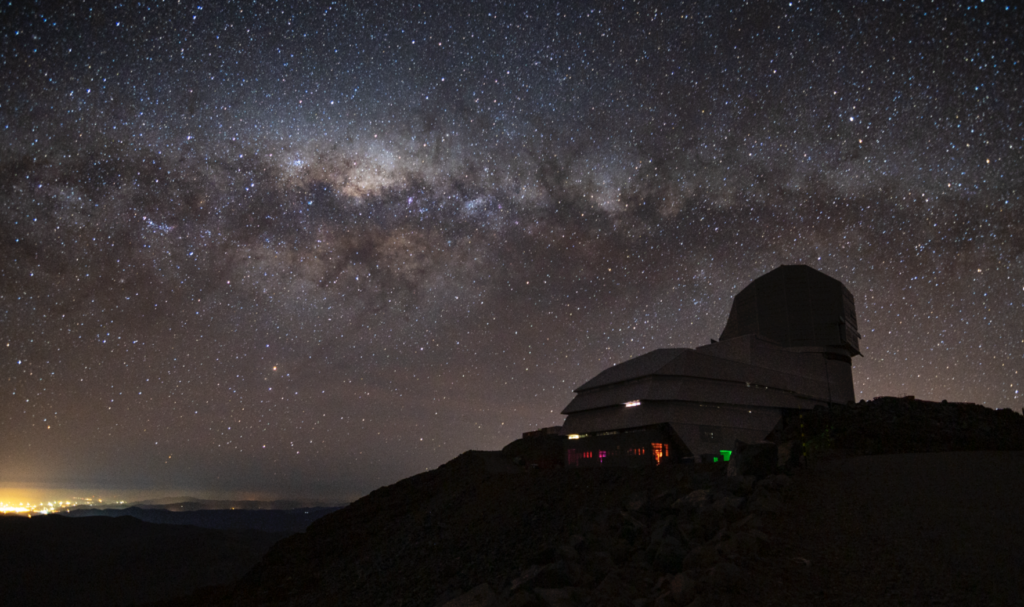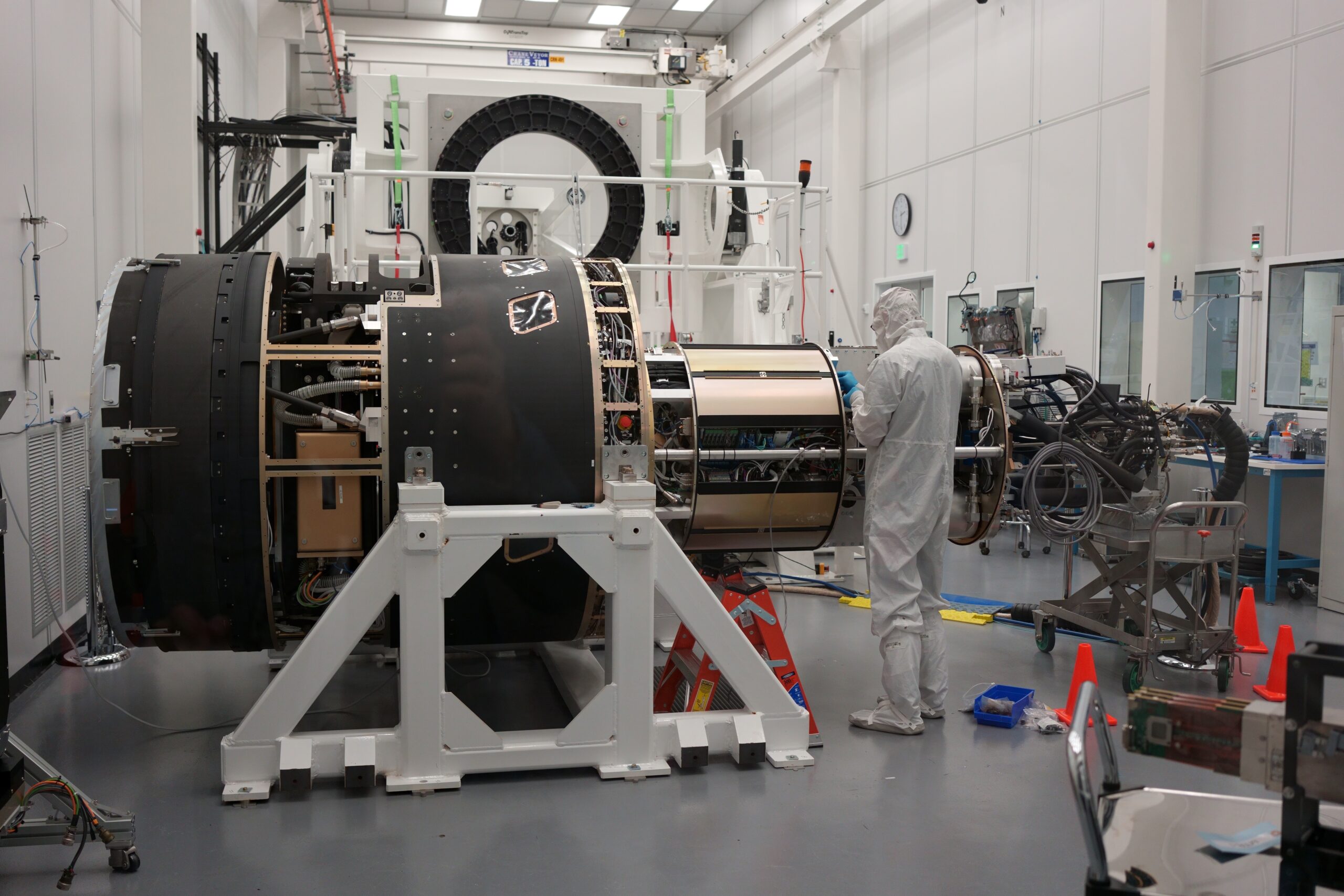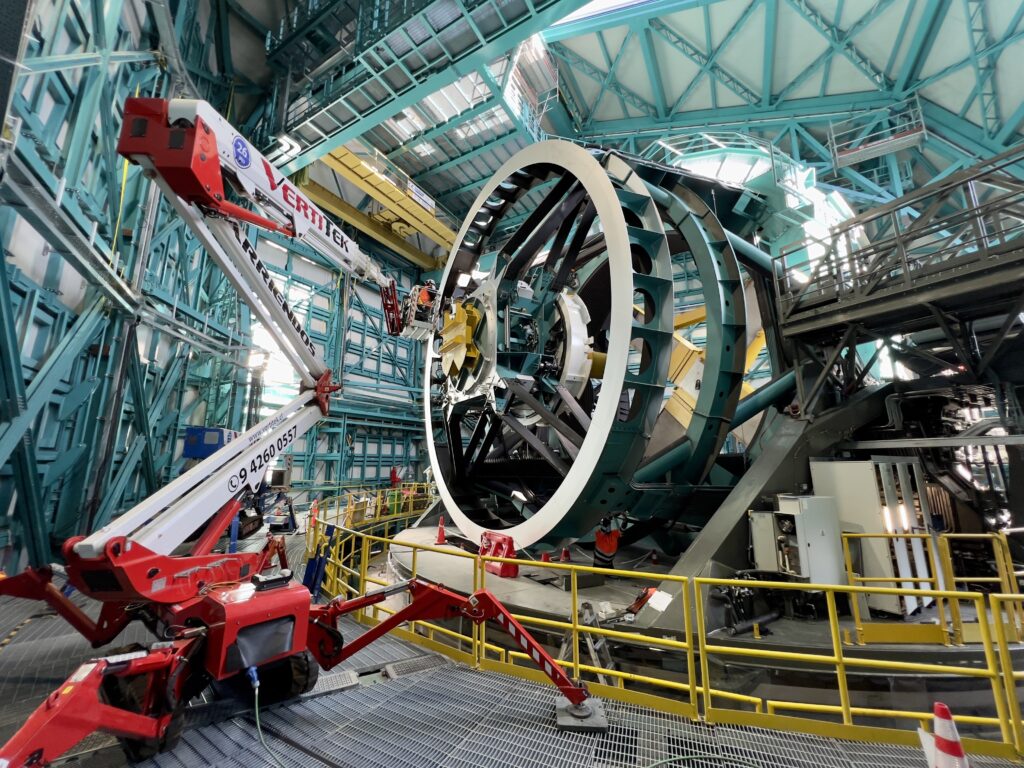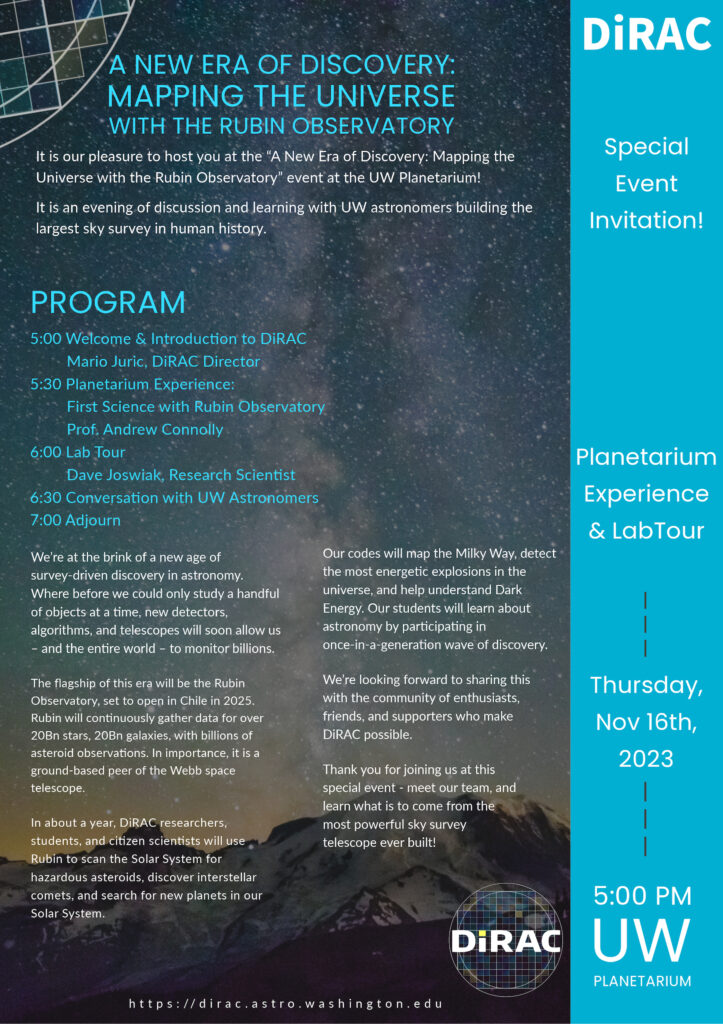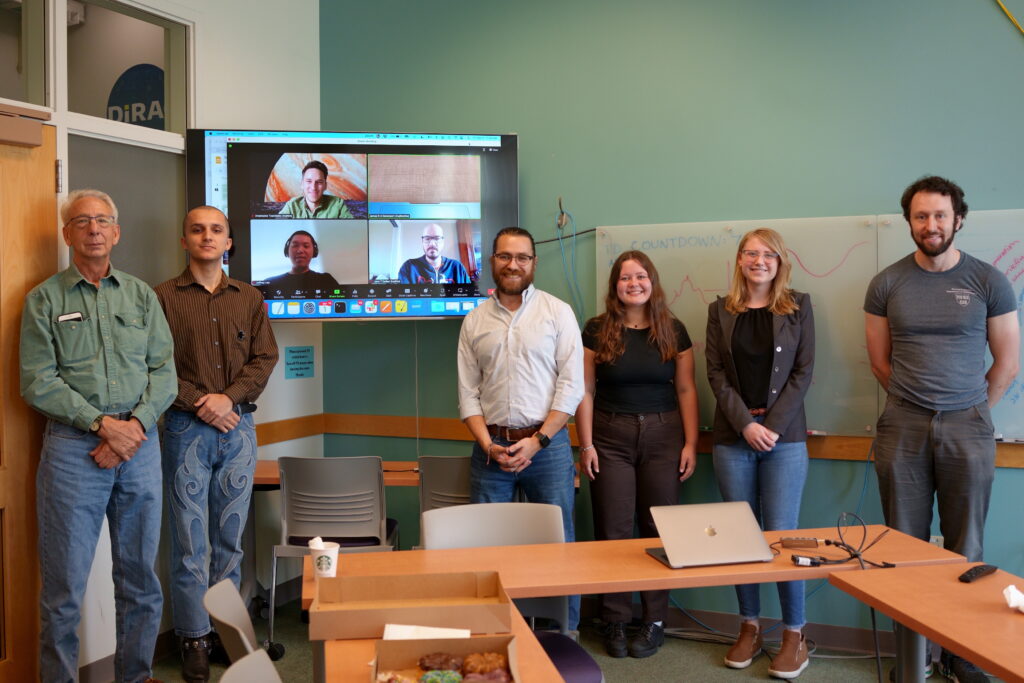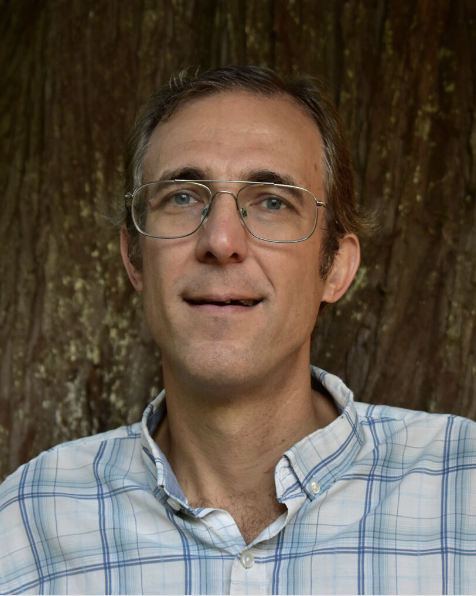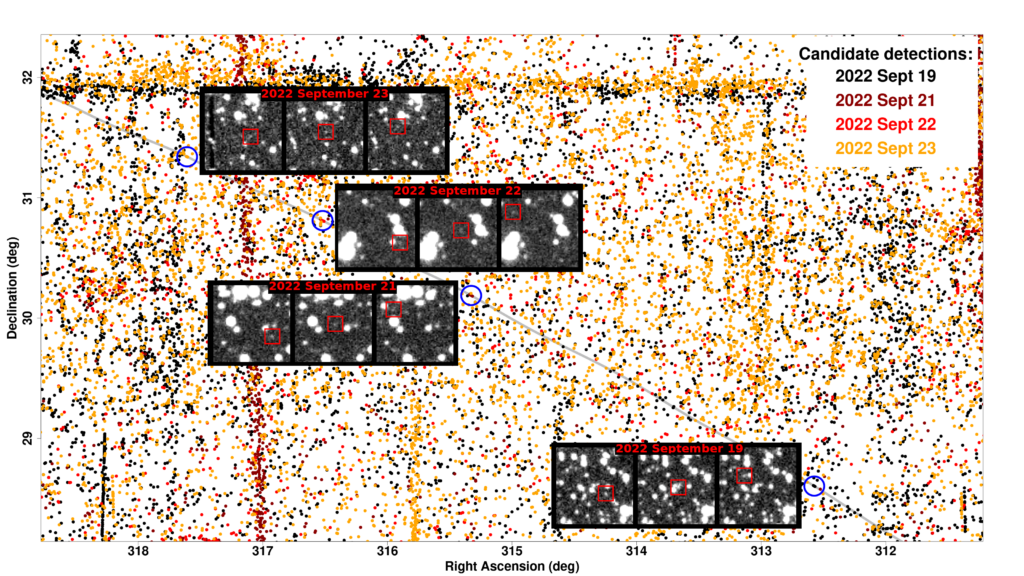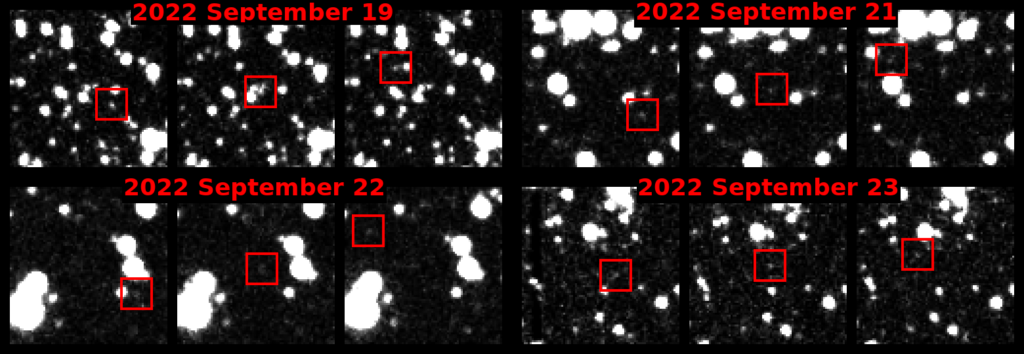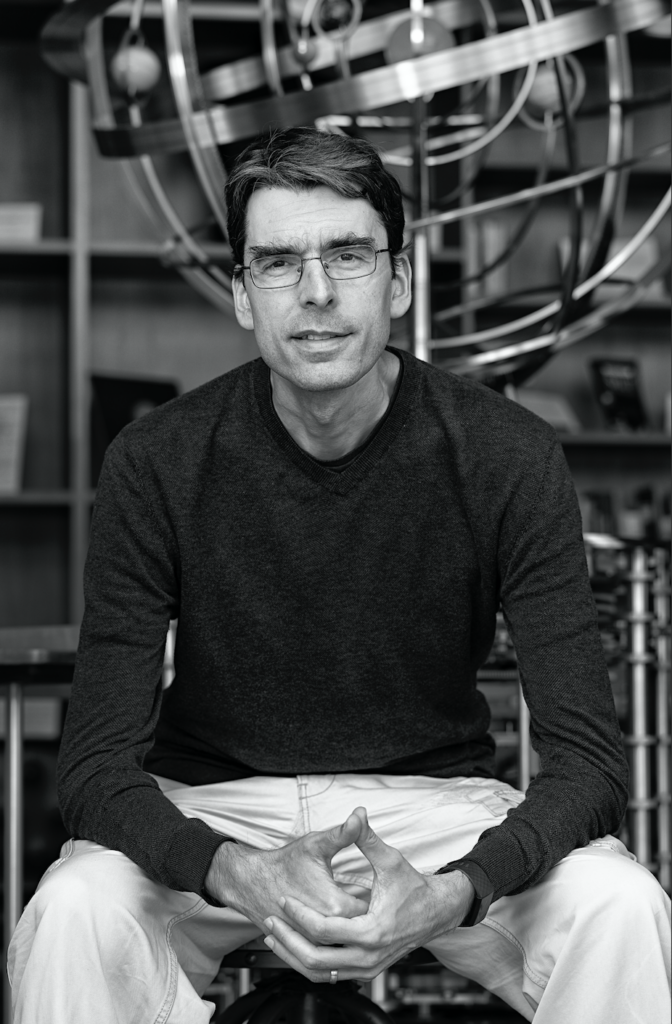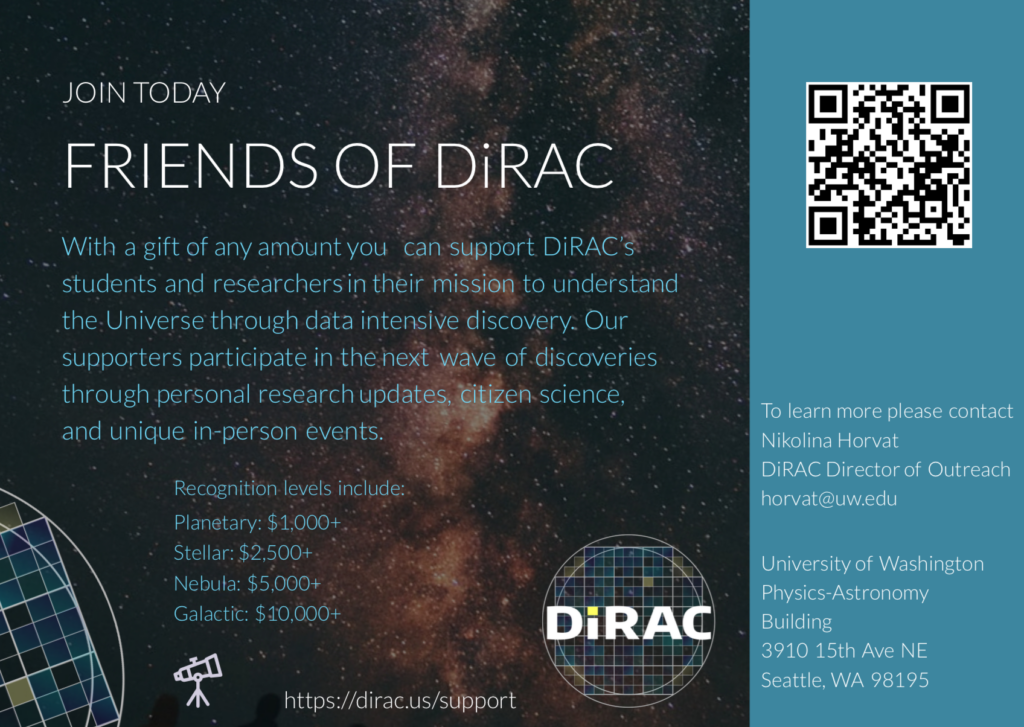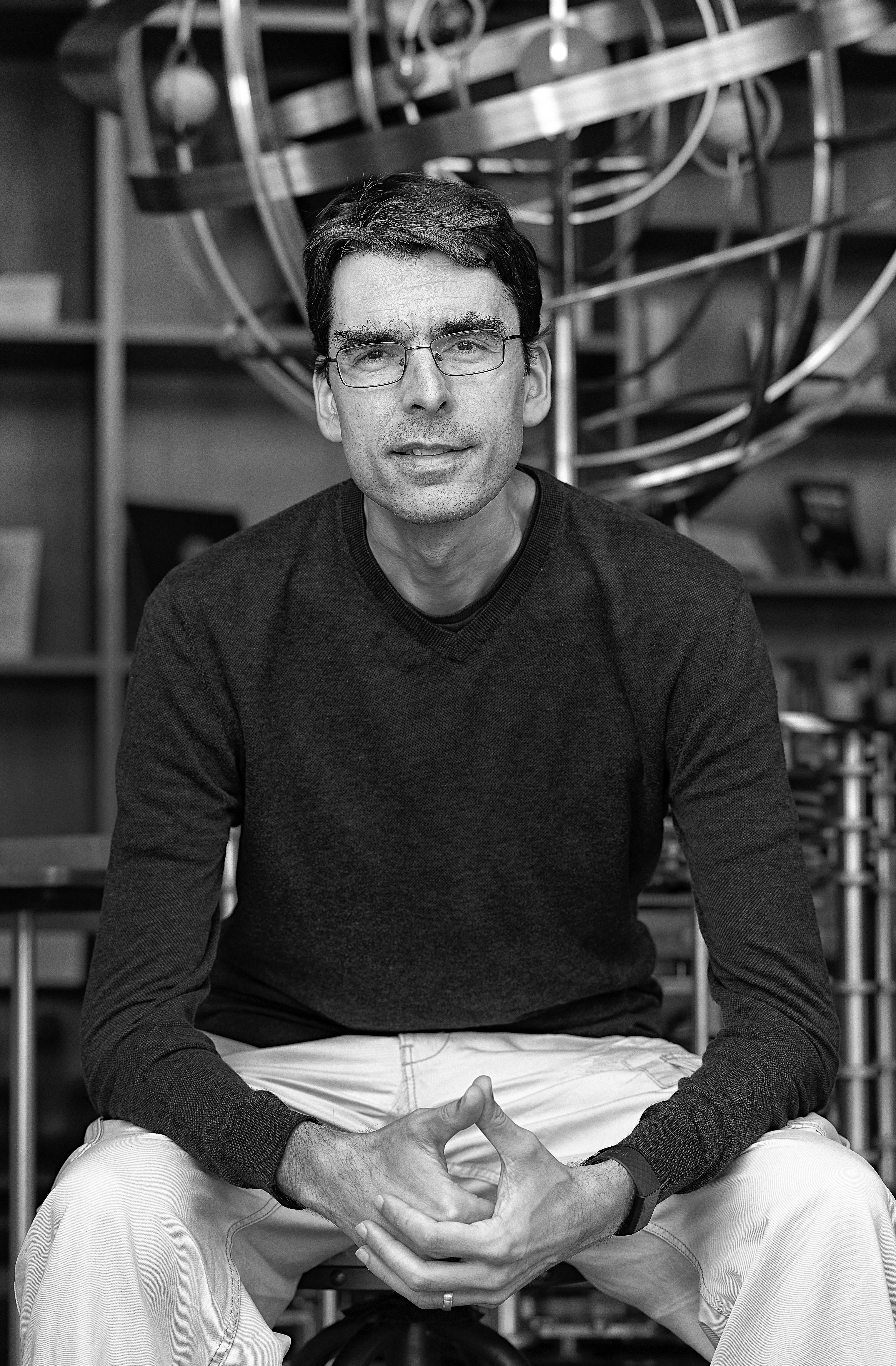
With another year of science behind us, it’s a pleasure to write to you today as the Director of the DiRAC Institute, University of Washington’s hub for research in data-intensive astrophysics and cosmology.
Founded just six years ago thanks to the generous initial support from the Charles and Lisa Simonyi Fund for Arts and Sciences, DiRAC has grown into a truly world-class research institute. In that time, our members co-authored over 500 papers garnering more than 13,000 citations, developed novel algorithms and software powering the next generation of astronomical experiments, all while training the next set of future leaders in astronomy and sharing the excitement of our research with the public.
Throughout 2023 we’ve continued to push towards our vision of a Universe understood through data-intensive discovery. Our team devised and leveraged the immense power of novel algorithms and large datasets to tackle some of the most pressing scientific challenges of our time. We’ve explored the Solar System, from discovering hundreds of distant small bodies in its farthest reaches to finding an elusive asteroid potentially hazardous to Earth. Our students sifted through time-domain data to discover rare stars, and identify strange X-ray sources. We looked at the impact of satellite constellations to Earth-based astronomy, analyzing their effect and ways to enable the co-existence of astronomy and technological progress in an increasingly connected world. And we continue to build and prepare for the science of the once-in-a-generation Rubin Observatory: our teams deployed the critical real-time data analysis pipelines, as well as the first version of novel big data analysis software and formats. I invite you to read more about these and other accomplishments in our Annual Report.
The support we receive from our wonderful community has always been a critical part of DiRAC’s success, and this year was no different. I’m happy to announce that, thanks to a generous donation from Lloyd and Janet Frink, our flagship DiRAC Postdoctoral Fellowship program will continue into 2024. And for the second year in a row, we’ve been able to award Summer Research Prizes, this time to five undergraduate students. This has been made possible by the generous support of David Brooks, Jeff Glickman, our Advisory Board members and numerous individuals. I wish to thank all of our supporters: our students and postdocs would not be able to explore the Universe without you – these accomplishments are yours as much as ours!
Looking ahead, 2024 promises to be incredibly exciting. After over two decades of developing and constructing the Rubin Observatory, we expect to obtain first observations near the end of next year. This observatory will be nothing short of revolutionary: from enabling us to search for new planets in our own Solar System to looking into the farthest reaches of the Universe and understanding the nature of Dark Energy and the Big Bang. A period of unprecedented excitement is before us.
Your gifts to DiRAC will enable our students and researchers to continue bringing these discoveries to the world in 2024. Join and support us on that journey, help us train the next generation of leaders in astronomy, and help make UW the center of the (scientific) Universe!
Sincerely,
Mario Juric
Director, DiRAC Institute
